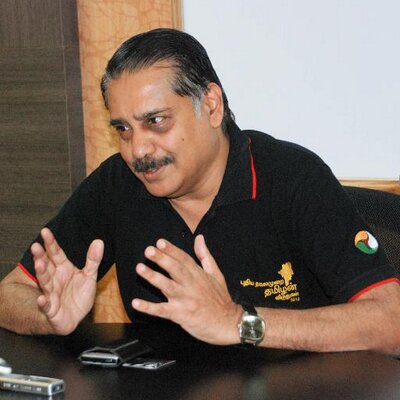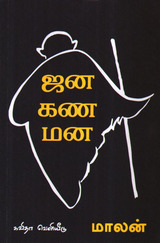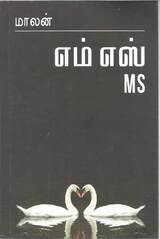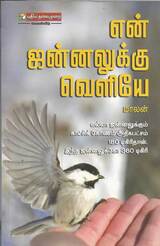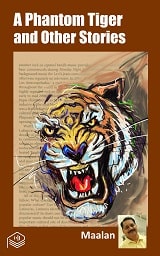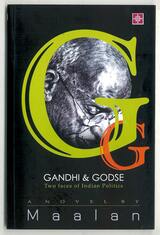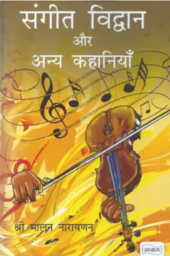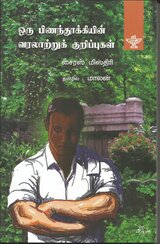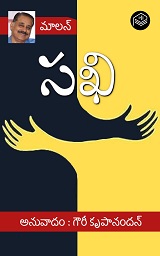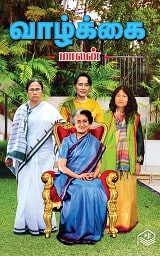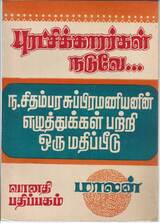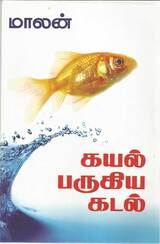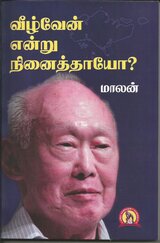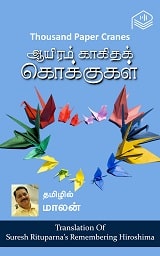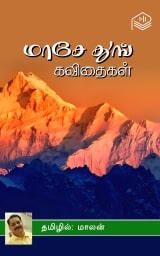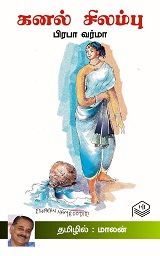Tamil Heritage and Indian Languages Week
Jawaharlal Nehru University, New Delhi
16 December 2022
Thirukural: The Springs Below
Maalan Narayanan
At the outset let me thank the revered Vice Chancellor and Prof. Dr Aravendan and his team for this meaningful initiative of a talk series on the legends in the Tamilscape. It is my pleasure and proud privilege to share my thoughts with this august assembly of scholars on Thirukural and Thiruvalluvar, the bard of the universal man.
I consider this a meaningful initiative, not to flatter Vice Chancellor or Dr Aravendan. I feel they have carried out an obligation expected out of all of us in a gracious manner. Two years ago I wrote in my weekly column in a popular Tamil weekly, Kumudam, about Thirukural and how our Prime Minister, whose mother tongue is not Tamil, is speaking about Thirukural wherever he goes and whatever the occasion. He had quoted Thirukural at least on ten different occasions at different places in 2020. I wrote that piece in Tamil. To my surprise, the very next day our Prime Minister tweeted, enclosing my article, expressing hope that more youth would read Thirukural.
Today I find JNU is nurturing that hope.
Thirukural has impacted great minds in the world, who have immortalised themselves in the annals of history. Dr Albert Sweitzer, Rabindranath Tagore, Dr Moris Winternitz, and Prof. Kamil Zvelebil are a few names to mention.
Among them, Mahatma Gandhi was one, whose thoughts were profoundly influenced by Thirukural. Young barrister Mohandas Karamchand Gandhi, who had not become Mahatma yet, was sailing to South Africa, came across a letter dated 14th December 1908, written by Leo Tolstoy to Tarakanath Das. Tarakanath was a member of Anusilan Samiti, a group advocating armed rebellion against the British. He wrote to Tolstoy describing the plight of Indians then and seeking his support to fight against British Colonialism
Tolstoy in his reply said, “’A commercial company enslaved a nation comprising two hundred millions. Tell this to a man free from superstition and he will fail to grasp what these words mean. What does it mean that thirty thousand people, not athletes, but rather weak and ordinary people, have enslaved two hundred millions of vigorous, clever, capable, freedom-loving people? Do not the figures make it clear that not the English, but the Indians, have enslaved themselves?’
Tarakanath was annoyed at this reply and gave a taunting reply to this in his paper ‘Free Hindustan’ Gandhi too was unhappy about this and wrote, “ One need not accept all that Tolstoy says”.
But Gandhi was greatly drawn towards another point Tolstoy made. Tolstoy argued with passionate conviction, that evil is restrained not with violence but with love. Gandhi later wrote “Tolstoy’s writings overwhelmed me. It left an abiding impression on me.”
In support of his argument, ‘evil is restrained with love but not with violence, Tolstoy cited six couplets from Kural:
The aim of the sinless One consists in acting without causing sorrow to others, although he could attain to great power by ignoring their feelings.
சிறப்பீனுஞ் செல்வம் பெறினும் பிறர்க்கின்னா
செய்யாமை மாசற்றார் கோள்
The aim of the sinless One lies in not doing evil unto those who have done evil unto him.
கறுத்தின்னா செய்தவக் கண்ணும் மறுத்தின்னா
செய்யாமை மாசற்றார் கோள்
If a man causes suffering even to those who hate him without any reason, he will ultimately have grief not to be overcome.
செய்யாமற் செற்றார்க்கும் இன்னாத செய்தபின்
உய்யா விழுமந் தரும்
The punishment of evil doers consists in making them feel ashamed of themselves by doing them a great kindness.
இன்னாசெய் தாரை ஒறுத்தல் அவர்நாண
நன்னயஞ் செய்து விடல்
Of what use is superior knowledge in the one, if he does not endeavour to relieve his neighbour’s want as much as his own?
அறிவினான் ஆகுவ துண்டோ பிறிதின்நோய்
தந்நோய்போற் போற்றாக் கடை
If, in the morning, a man wishes to do evil unto another, in the evening the evil will return to him.
பிறர்க்கின்னா முற்பகல் செய்யின் தமக்கின்னா
பிற்பகல் தாமே வரும்
[There is a very strong possibility that Tolstoy might have read Kural in its German Translation which was published in 1856]
Gandhi translated Tolstoy’s letter into English and Gujarati and published them in his paper, Indian Opinion. It was Thiruvalluvar’s இன்னா செய்யாமை (Do no evil) became Law of Love for Tolstoy, Satyagraha for Gandhi, Non-violence movement for Martin Luther King, and later to Nelson Mandela and Maya Angelou
In 1910, a year after publishing Tolstoy’s letter, he wrote to his cousin Maganlal Gandhi, he makes a reference to a popular phrase from Thirukkural, on a familial issue. “Since Santok has given birth to a daughter, there is no worry on her account now. Karka kasadara karpavai. Please ponder over this sentence printed at the top of Pope’s Tamil grammar. There could hardly be a task more difficult than to conquer one’s passion with one’s own wife.”
Interestingly, the actual maxim given on the first page of the Handbook was a proverb ‘கற்கக் கற்கக் கசடறும்’ [Karka karka kasadarrum], translated by Pope as ‘Difficulties will vanish as you learn on’. This fortuitous error by Gandhi is a fairly clear indication that he was familiar with Thirukural at that time. As we will see, he was to repeat this error in another letter.
Gandhi sustained his interest in Thirukural for many long years. When he spoke at a public meeting in Tuticorin in 1927 he said, “Let me inform you that some twenty years ago I began to learn Tamil with the desire and object of studying Thirukural in the original. It has been a matter of deep sorrow to me that God never gave me time to finish studying the Tamil language. I am entirely in favour of the agitation for making the vernaculars as medium of instruction. We ought to learn the Tamil language and prefer it to English and place it above all other languages.” (as reported in The Hindu dated 8.10.1927)
To me, for that matter to anyone who has read and brooded over Kurals, its impact on Gandhi would not be a surprise. There is a Kural which says:
தொட்டனைத் தூறும் மணற்கேணி மாந்தர்க்குக்
கற்றனைத் தூறும் அறிவு.
Rev. Dr G.U.Pope translates this as
The deeper a well is dug, the more the water that springs;
the more one learns, the more the wisdom it brings
and Kaviyogi Shuddhananda Bharati translates this as
As deep you dig the sand spring flows
As deep you learn the knowledge grows
There is not much difference in the substance of the translations though Rev. Dr Pope rates learning in terms of quantity (“More”) Shuddhananda Bharati perceives by the depth. One considers the outcome of learning as wisdom and the other as knowledge.
Almost all the commentators have written while explaining this Kural that the quantum of water one gets corresponds to the depth of the well he dugs at the river bed.
But this Kural offers more to ponder than these simple explanations. We are all aware that streams run below rocks, hard clay, rigid soil and below river beds. To bring out the water that lies below a rock is an arduous task, and to fetch water that runs underground is a laborious process. You need powered machines to dig and skilled labour to operate them. On the contrary, digging a well in a river bed is child’s play.
Valluvar implies learning is not as arduous as it is perceived to be and the outcome is what you already have inside and is not an external manifestation. In Tamil heritage the process of learning and its outcome, be it knowledge or wisdom, was through six steps, namely அறிதல்( through one’s own experience) தெரிதல்(through information) கேட்டல் (through listening) வாசித்தல்(reading) சிந்தித்தல் (pondering) தெளிதல் (getting clarified) You might have noticed that there is a progression in these six steps. The higher or deeper you go you realise better. In my opinion, he has preferred the simile மணற்கேணி sand well to imply these steps of learning
In the spring below the river bed, the water doesn’t come from outside. It is already there inside. With a little effort, one will be able to tap it if one is sincere about it. It doesn’t require a machine or specialised skills. Sometimes it may take just a moment.
To cite an example let me go back to Gandhi. The two key tenets of Thirukural- truth and returning good for evil- were already in his heart, He mentions a Gujarati didactic stanza in his Autobiography, which ‘gripped his mind and heart’ when he was a boy. He recollects the same song by Shamal Bhatt when he was in London too
For a bowl of water give a goodly meal:
For a kindly greeting bow thou down with zeal:
For a simple penny pay thou back with gold:
If thy life be rescued, life do not withhold.
Thus the words and actions of the wise regard;
Every little service tenfold they reward.
We can see many parallels between this song and couplets in Kural
தினைத்துணை நன்றி செயினும் பனைத்துணையாக்
கொள்வர் பயன் தெரிவார்
What Gandhi had heard in his boyhood, flowed into action, when triggered by Thirukural. In other words, Gandhi found the copious stream of benevolence below the sand well in him he dug himself. Had he not dug it, he might have not found the spring that was very much inside him
Thirukural is a sand well in the beds of an ageless river, that is, Tamil. And it gives you in abundance when you tap it. If you freeze it as a text and stack it on your library shelf it may not help. Read, ponder and get inspired. After all, there is a little bit of Gandhi in every one of us.

